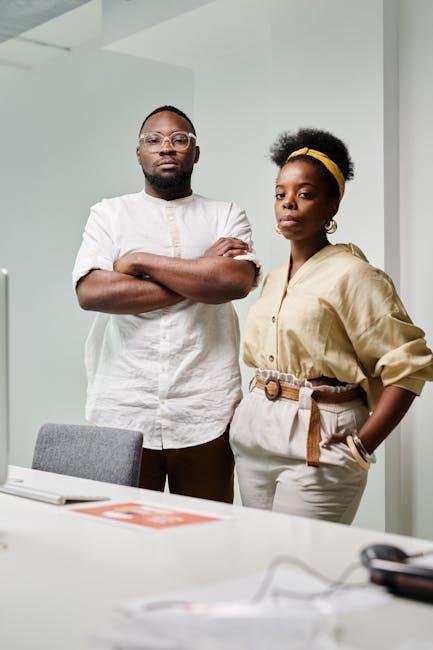In today’s fast-paced work environment, where collaboration often trumps solo achievements, the strength of our workplace relationships can be the key to unlocking creativity, fostering innovation, and enhancing overall morale. yet, building these essential connections doesn’t always happen organically; it requires intention, effort, and a strategic approach. This article delves into practical ways to cultivate and nurture relationships with colleagues, promoting an atmosphere of trust and respect. By exploring effective communication techniques,the art of empathy,and the value of shared experiences,we’ll uncover the foundational pillars of a harmonious workplace. Join us as we navigate the intricate dynamics of professional relationships, transforming your office into a thriving community where everyone feels valued and engaged.
Understanding the Foundations of Trust and Communication
At the core of any thriving workplace lies the delicate interplay of trust and communication. When colleagues trust one another,they feel secure sharing ideas and feedback without fear of judgment. Effective communication amplifies this trust, ensuring messages are not only heard but understood.By fostering open dialogues, team members can express their concerns, share insights, and validate each other’s contributions. This creates a culture where individuals are motivated to collaborate instead of competing, leading to enhanced problem-solving and innovation.
To build a solid foundation, it’s essential to focus on several key elements:
- Clarity: Be open about decisions and changes affecting the team.
- Active listening: Demonstrating genuine interest when others speak encourages interaction and mutual respect.
- Consistency: Regularly uphold commitments and follow through on promises to enhance credibility.
- Empathy: Understanding colleagues’ perspectives fosters stronger bonds and reduces misunderstandings.
| Trust-Building Practices | Communication Techniques |
|---|---|
| Regular Team Check-ins | Open-Door Policy |
| Peer Recognition Programs | Feedback Loops |
| Team-Building Activities | Clear Messaging Channels |

Fostering Collaboration through Active Listening and Empathy
Effective communication is at the heart of any triumphant team, and it begins with active listening. This essential skill not only allows individuals to understand one another better but also promotes an environment where everyone feels valued and respected. By focusing on the speaker, maintaining eye contact, and providing feedback, you can transform conversations into meaningful exchanges. Consider implementing these practical strategies to enhance your listening skills:
- Paraphrasing what you’ve heard to ensure clarity.
- Avoiding interruptions and resisting the urge to formulate a response while listening.
- Asking open-ended questions to encourage elaboration and deeper discussion.
In tandem with active listening, empathy plays a crucial role in fostering collaboration among colleagues. Understanding and appreciating the emotions and perspectives of others not only strengthens connections but also cultivates trust and open communication. Consider the following approaches to develop an empathetic workplace culture:
- Regular check-ins to understand the challenges and concerns of team members.
- Encouraging vulnerability by sharing personal experiences to build rapport.
- Practicing viewpoint-taking to see situations from colleagues’ points of view.
Here’s how these elements intertwine to create a supportive workplace:
| Active Listening | Empathy |
|---|---|
| Builds trust through validation | Nurtures understanding and compassion |
| Encourages open dialog | Fosters a safe space for expression |
| Enhances collaboration and creativity | Strengthens interpersonal relationships |

Navigating Conflict with Constructive Feedback Strategies
Conflict, though often perceived negatively, can serve as a powerful catalyst for growth when approached with the right strategies. Active listening plays a crucial role in transforming disagreement into dialogue. By genuinely engaging with the other person’s viewpoint, you show respect and openness, laying the groundwork for more constructive conversations. Moreover,consider employing the “sandwich” technique for delivering feedback. Start with a positive note, introduce the issue, and close with encouragement. This method makes it easier for colleagues to receive criticism without feeling attacked, fostering a more collaborative environment.
To further enhance communication, utilize non-verbal cues that demonstrate empathy and understanding. Maintain eye contact, use open body language, and nod in acknowledgment to signal your attentiveness. Additionally,documenting feedback in a structured format can help clarify points and provide a reference for future discussions. Below is a simple table illustrating effective feedback components:
| Feedback Element | Description |
|---|---|
| Clarity | Be specific about what needs enhancement. |
| Timeliness | Provide feedback soon after the event for relevance. |
| Actionable | Suggest clear steps for correction and growth. |

Celebrating Diversity to Enrich Team Dynamics and Connections
In today’s interconnected world, embracing a variety of backgrounds, perspectives, and experiences within teams can lead to innovative solutions and enhanced creativity. Diversity is not just a metric; it’s a driver of collaboration that brings a wealth of ideas to the table. By fostering an inclusive environment where individuals feel valued for their unique contributions, teams can break down barriers and build trust. Here are some effective ways organizations can celebrate diversity:
- Encourage open dialogue through team-building exercises that highlight personal stories.
- Implement mentorship programs that pair employees from different backgrounds.
- Host cultural awareness workshops to educate employees on global perspectives.
Integrating diverse voices not only strengthens workplace relationships but also nurtures a sense of belonging. When employees see their identities reflected and respected, they are more likely to engage fully in their roles. to illustrate the impact of diversity on team dynamics, consider the following table:
| Team Characteristics | Impact on Team Dynamics |
|---|---|
| varied Backgrounds | Encourages broader perspectives and ideas. |
| mixed Skillsets | Enhances problem-solving capabilities. |
| Different Cultures | Fosters empathy and understanding among team members. |
Wrapping Up
building stronger workplace relationships is not just a desirable goal; it’s a vital element that can enhance collaboration, boost morale, and ultimately drive success within any institution. by prioritizing open communication, embracing diversity, and fostering an environment of trust and respect, each of us can contribute to a workplace culture that thrives on connection. As you embark on your journey to strengthen these relationships, remember that every interaction is an opportunity—a chance to learn, grow, and create an atmosphere where everyone feels valued. So, take the first step today: reach out, listen intently, and engage with your colleagues. Together, let’s cultivate a workplace that not only achieves its objectives but also nurtures meaningful connections that extend beyond the office walls. After all, strong relationships are the foundation upon which successful teams are built.

